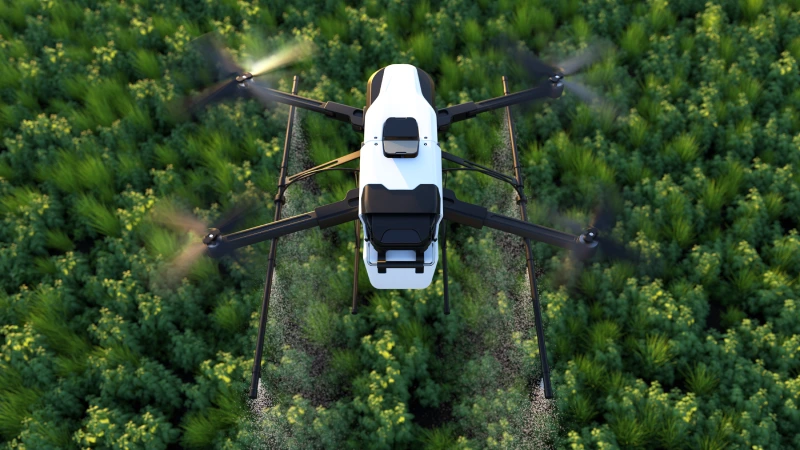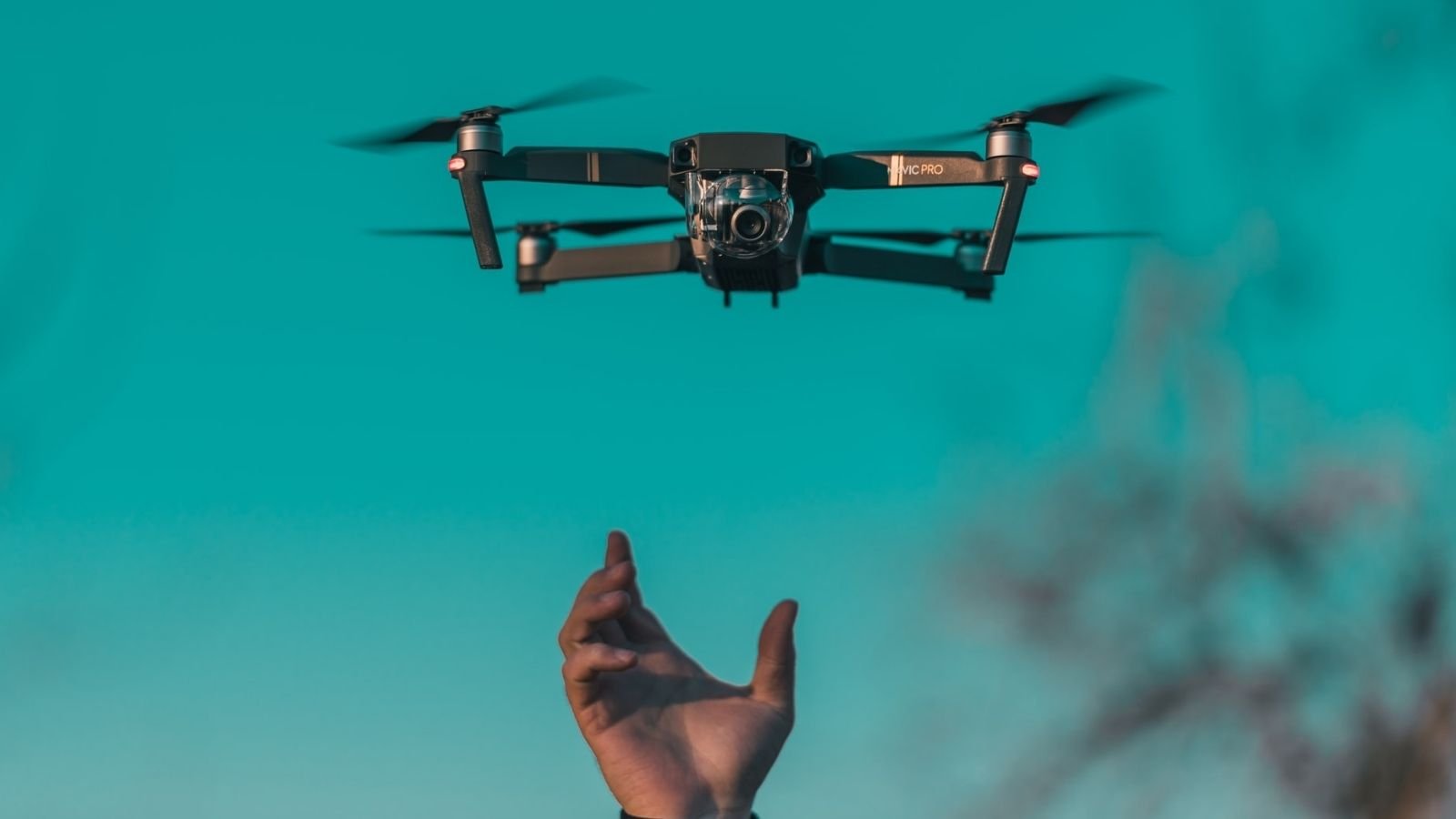Table of Contents
Highlight
- Dual-Use Breakthrough: India’s drone technology 2025 unites agriculture and defense through indigenous UAV innovation and “Make in India” initiatives.
- Smart Applications: From precision farming and crop mapping to border surveillance and ISR missions, drones are transforming efficiency and security.
- Future-Ready Vision: AI-driven, solar-powered UAVs, drone swarms, and enhanced policy support will propel India toward global drone leadership.
Drones (UAVs) have come a long way since they served merely as novelty toys, growing rapidly in importance and applications in agriculture, surveillance activity, mapping, and integrated defense. In India, a great deal of indigenous UAV advancement continues to occur in 2025, with strong financial support from the government and energy in the use of startups. This article will highlight dual-use drone technology that is merging agriculture and defense systems, the actors involved, key use cases, and future strategic opportunities.

Strategic and Policy Environment
The impetus behind indigenous drone development is highlighted by the “Make in India, Fly for India” sentiment. The Drone Rules (amendment) and the PLI scheme to incentivize domestic production of drones. Defense research and development funding, and startup incubators (e.g., D, RDO, Aero India) are supporting dual-use UAV platforms. The increase in demonstrations at exhibitions (e.g., Delhi Police, Police Expo 2025) emphasizes India’s push.
Use of Drones in Agriculture
- Crop Mapping and Precision Agriculture
Multispectral and RGB (red, green, blue) drones will fly over fields to produce scanned images that can detect crop stunting, stress, pest infestation, and moisture variance.AI. AI (artificial intelligence) based models can learn how to convert drone imagery into actionable maps, e.g., segmentation maps, detection of anomalies, and yield estimates. States such as Punjab, Maharashtra, and Telangana contain fields in which drones are used for the purpose of targeting fertilizer/pesticide use, reducing the costs of business inputs.
- Seed/Pesticide/Fertilizer Spraying
Drones with spray tanks (5-20 L) can deliver micro-dosing of inputs over an area of interest, particularly in undulating terrain. This allows farmers to move away from volumes of chemical uniform blanket spraying.
- Field Mapping, Irrigation Design & Surveying.
Survey drones produce an elevation/contour map to help implement irrigation channels, drainage for design, and land subdivision.
- Crop Insurance & Loss Assessment
Following a flood, drought, or hail, drones aid insurers in quickly estimating damages and provide maps and analytic tools to assist with claims.

Use of Drones for Defense and Security:
- Surveillance, Reconnaissance, and Border Monitoring. Some fixed-wing and vertical take-off drones can be used to monitor border regions or high altitude regions (Ladakh, Himalayas) for alerts of intrusion. Drones can be outfitted with infrared and day/night cameras and thermal imaging.
- Electronic Warfare and ISR (Intelligence, Surveillance, Reconnaissance) UAVs flying with signal intercept payloads are useful in SIS (Signals Intelligence) type roles. Some prototypes are able to carry communication relays, jamming modules, or any number of electronic payloads.
- Pathfinder / Target Designation Drones are essentially acting as forward scouts by designating targets for artillery, providing guided munitions, or feeding real-time ports back to command posts.
- Logistical and Resupply in Remote Terrain Drones may deliver small payloads such as medicine, rations, or ammunition to forward posts in high altitude and heavily wooded jungles.
Startup and Industry Highlights
Aero Farms / AgriDrone: A number of Indian agritech firms are creating drones to fit Indian cropping patterns with AI.
Defense/dual-use companies: A number of drone companies are now engaged in partnerships with the DRDO/HAL/defense clusters to develop systems that have redundancy (such as fail-safe systems) in them.
Exhibitions & demonstrations: The Delhi Police demonstrated drone swarms and an aerial surveillance UAV at the Police Expo 2025.
Export potential: Some drones have been designed to export to allied countries in South Asia, Africa, and Southeast Asia, using either defense or agricultural paradigms.
Challenges & Technical Restrictions

Battery life/endurance: Most consumer/medium drones have endurance of 20-60 minutes, and extending the range still presents challenges.
Regulatory clearance & airspace deconfliction: Drones that operate near airports, or in air corridors, must obtain clearance from authorities.
Payload limits: Heavy payloads are not nimble, and also limit range and energy efficiency.Reliability in extreme weather/terrain: Drones can be damaged by high winds, rain, or dust.
Data management and privacy: The imagery, video, and mapping raise privacy, sovereignty, and data protection issues.
Cost vs ROI: For marginal farmers, he cost justification of drone services is still not consistent.
User Cases/Illustrations
In Maharashtra, drones mapped 1000 acres of cotton to identify early signs of infestation, which allowed for selective spraying and lowered intended pesticide costs by 30%.In border areas, multiple UAVs conducted patrols and were able to identify unauthorized movement in rugged terrain. The UAVs relayed video feed live back to the command posts.
In mountainous tribal regions, supply drones transported medical supplies to remote health posts when roads were not passable.
Implications:
The imbalance between the civilian and defense applications within a drone-centric posture will solidify the push towards dual-type leverage. As droneonomics scale at home, more consumer-grade supply chains (motors, avionics, sensors) would advance as well. And, probably also eventually, data generated from agricultural hypothetical drones would flow into national AI systems for estimating yields, climate modeling, and food security

After defense will be entrenched with indigenous UAVs cr, reducing reliance on foreign platforms, which creates additional possibilities for export.
What to Watch in 2026
Long endurance drones (solar UAVs) for protracted surveillance.
Swarms of drones and coordinated algorithms to saturate areas.
AI edge processing on-board drones for real-time processing decisions, ahead of density and at high velocity.
More regulatory policy frameworks can be expected (beyond the Drone Rules) to enable and encourage large-scale commercial drone flights in the future.
Additional possibilities of drone data from land with DPIs (agriculture, disaster response, insurance).
Conclusion
India’s drone ecosystem is surging in 2025, seeing a shift from drone experimentation to deployment in agriculture and defense. Dual-type mode allows for convergent synergies. Techniques that are developed for farm mapping and are further cross-compatible to support surveillance for traditional defense services and military overlaps, and vice versa.

The challenge will be moving past battery, regulatory, and cost barriers, but India has the landscape, potential, and supportive entrepreneurial energies to develop a cohort of army and futuristic novel against the data collection, analysis, and intel.